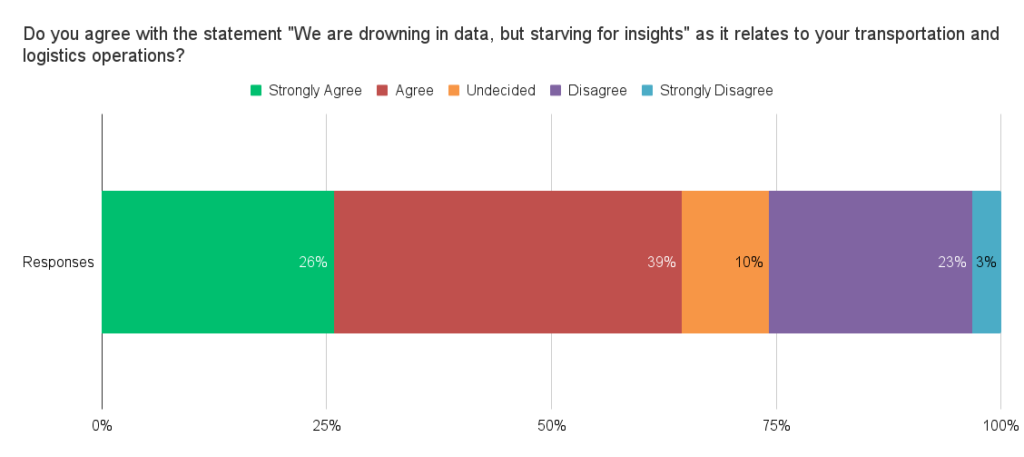Author’s note: Last month, I participated in a webinar hosted by Trimble titled, “Data: Don’t Drown In It, Deliver with It!” The following is an excerpt of my presentation.
What is data?
According to the dictionary, data is “facts and statistics collected together for reference or analysis.”
Why do we need or want data? It’s a way for us to know where we are and where we’re going. Otherwise, we’re just guessing, which is why the famous engineer and management consultant W. Edwards Deming said, “In God we trust; all others bring data.”
In other words, since none of us are God, we need to have a way to prove or substantiate what we say with regards to how we’re performing, whether we’re improving or not, where the biggest problems are, and so on.
Deming’s quote implies that even though you can be a trustworthy person, your word, your opinion, your perspective, your gut feelings are not enough. You also need to provide data – facts and statistics – to validate what you say.
The most important word in that quote is Trust.
Now here’s the thing about trust that isn’t expressed directly in Deming’s quote. Trust not only applies to people, but also to the data itself.
Where is the data coming from? Is it accurate? Is it timely? Is it complete?
So there’s a quality dimension to data that is important too.
Data in Transportation & Logistics
Let’s bring it down a level and talk about data in transportation and logistics operations. It’s among the most data-intensive parts of the supply chain. We collect data on (among other things):
- Rates
- Miles driven
- Stops per route
- Dwell time per stop
- Pick-up time
- Delivery time
- Average speed
- Temperature
- Fuel costs
- Maintenance costs
- Empty miles
- Status updates
- Weather and traffic data to provide additional context and intelligence
And that data is being generated, shared, and stored across a multitude of systems, and in a variety of formats – EDI, APIs, Wifi, GPS, and the list goes on. It is fair to say that we are gathering more data about our transportation and logistics operations today than ever before. The problem is that many companies are drowning in all of that data.
More data is not necessarily better or desirable. The goal, of course, is not about how much data we can collect, but about what we can do with it. What insights can we extract from data that will inform our actions — to improve our operations, fix a problem, innovate a new product or service.
In other words, the goal is to convert data into actionable insights that deliver business benefits.
But if you don’t have a strategy and process in place to manage the data you collect, you can quickly find yourself buried in it.
In fact, we recently surveyed our Indago supply chain research community about data in transportation and logistics. We asked them, “Do you agree with the statement ‘We are drowning in data, but starving for insights’ as it relates to your transportation and logistics operations”?
Almost two-thirds of the respondents either Agreed or Strongly Agreed with that statement, while about a quarter Disagreed or Strongly Disagreed.

“Transportation professionals are great at getting things done, but terrible at data science,” said one Indago executive. “We act based on experience and what we can see, rather than what data is telling us. A change towards data science will require investments in retraining seasoned professionals to meet the challenges of the future.”
Another executive added, “We do a lot of data reporting, but not as much data analysis/understanding. For example, charts and graphs with no indication of standard/target/goal, so while trends are obvious it is not easy to understand if current results are good or bad.”
Although the sample size is not large, our research community represents a cross section of industries, and the companies are all names you would recognize. The key takeaway is that many companies are “drowning in data, but starving for insights” in their transportation and logistics operations.
How would you have answered this question? Are you drowning in data but starving for insights too? And what makes converting data into actionable insights difficult?
I encourage you to watch the full webinar where I present additional Indago data related to this topic, share some examples of how to drive business value with data in transportation, and I address the following questions:
- When it comes to driving value in transportation and logistics with data, how should companies get started? What’s the first step?
- What is the biggest mistake companies make?
- How can technology help? What capabilities are important?
- Are transportation professionals, in effect, becoming data scientists?
After watching the webinar, post a comment and share your perspective!









